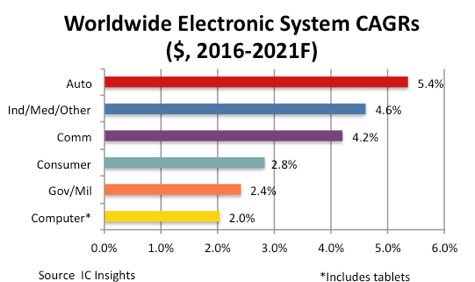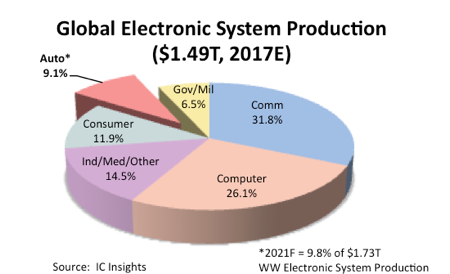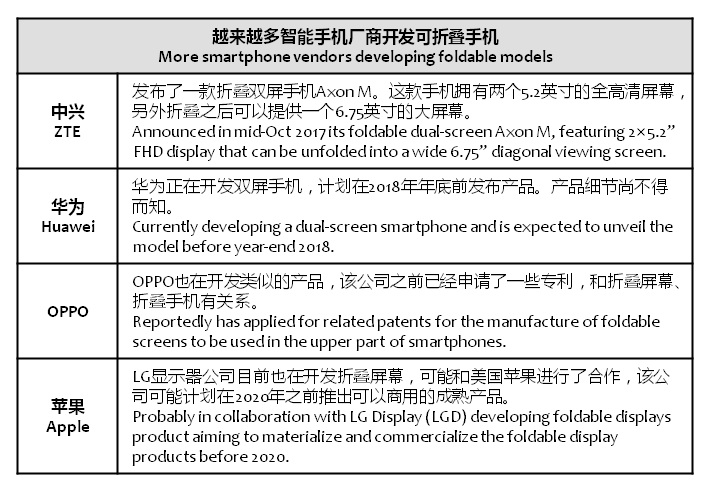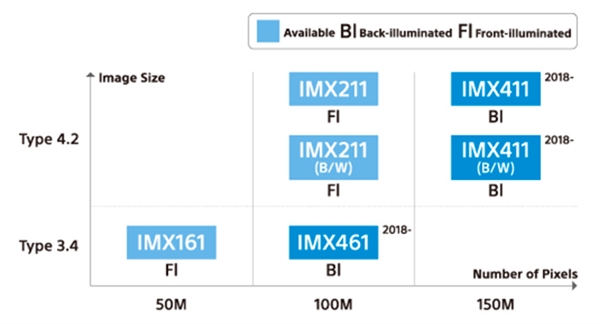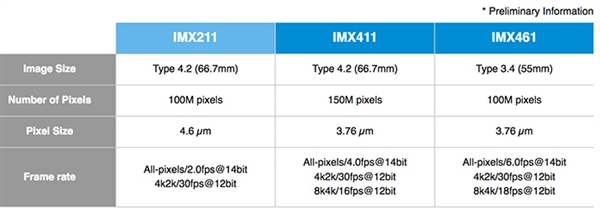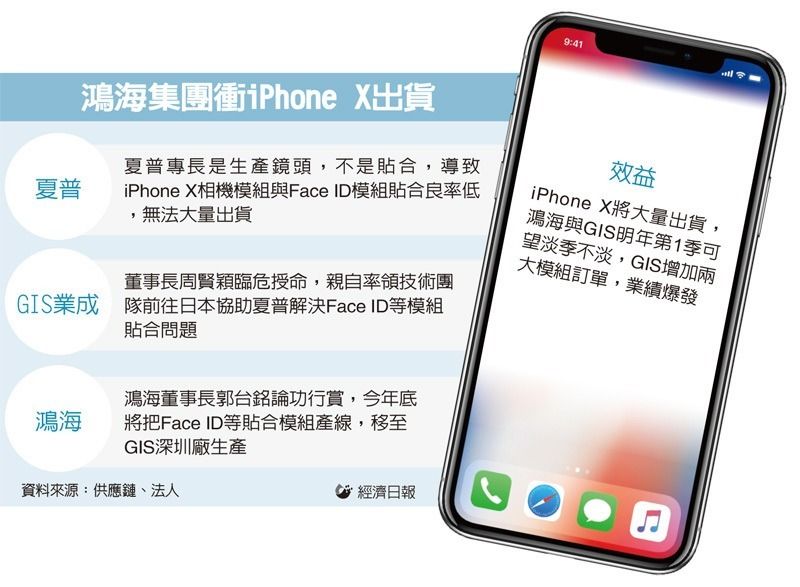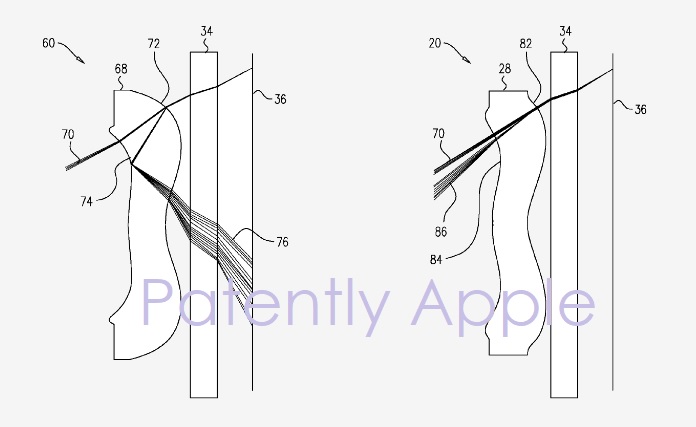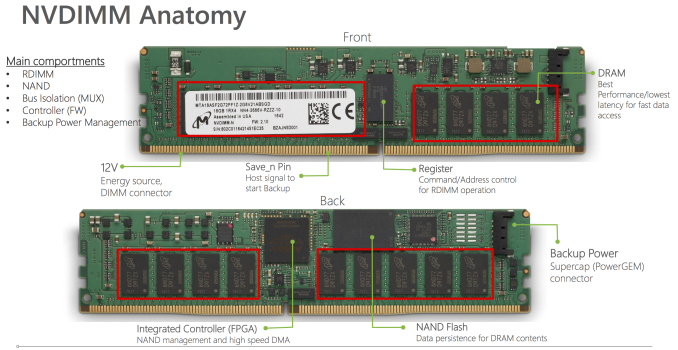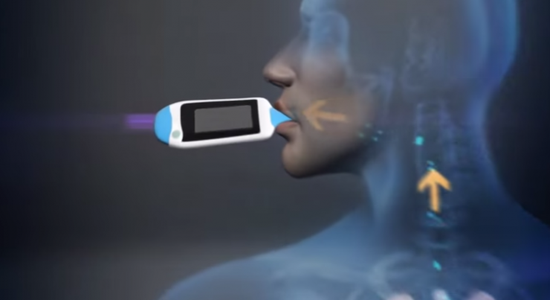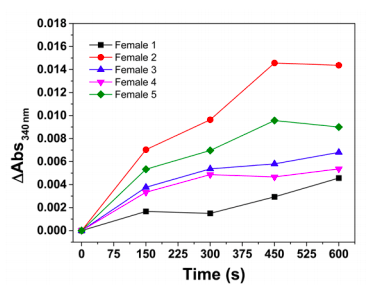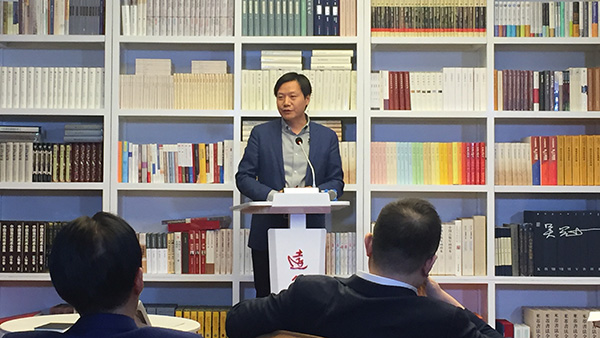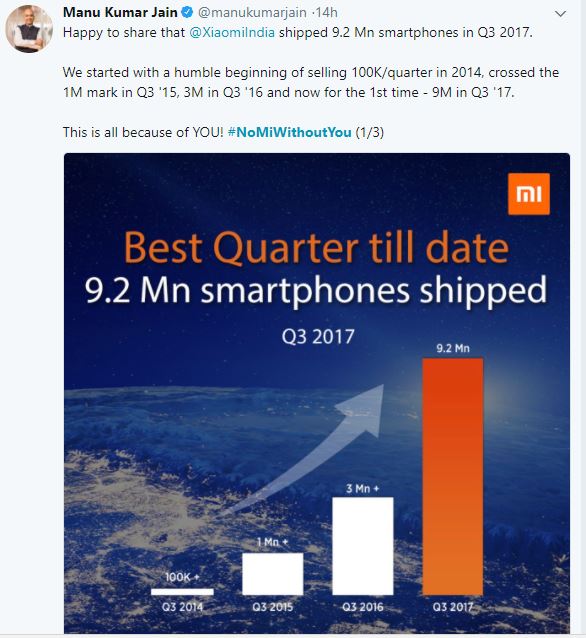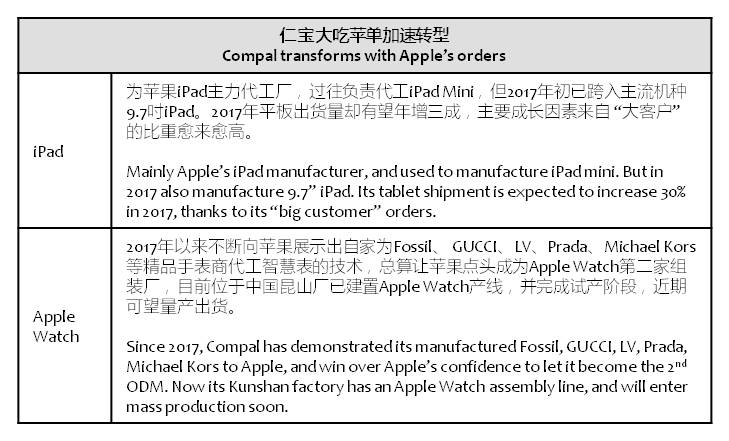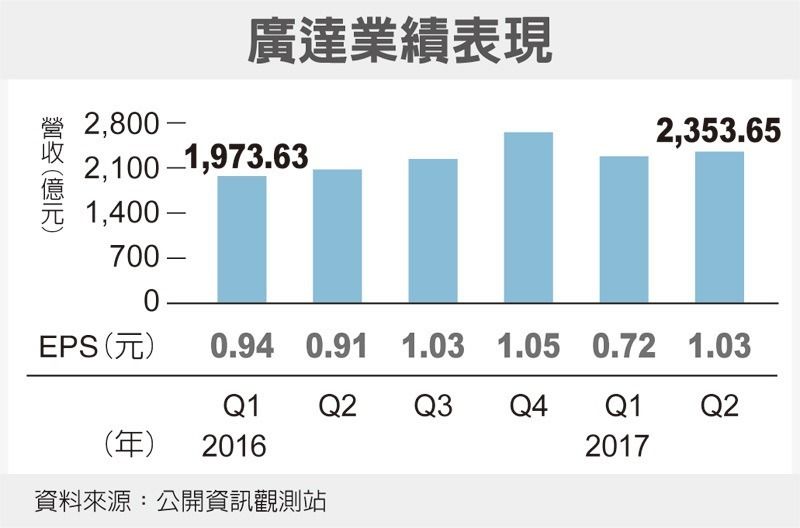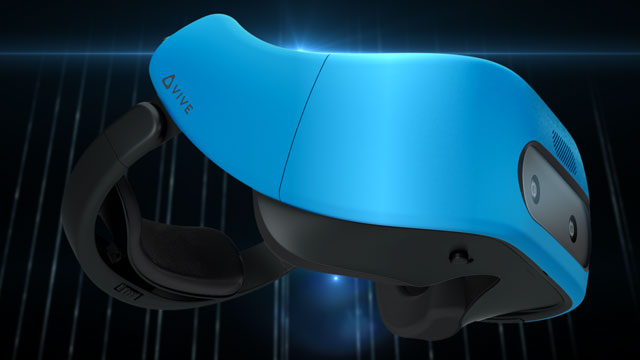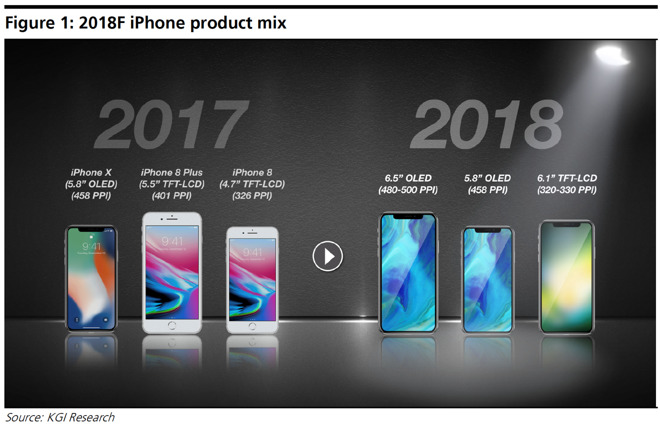
11-14: Qualcomm has rejected the unsolicited proposal announced by Broadcom; A number of smartphone vendors are playing catch-up on the development of foldable smartphones; etc.
Chipsets
Automotive electronic system sales are forecast to rise by a compound annual growth rate (CAGR) of 5.4% from 2016 through 2021, which is the highest among six major end-use system categories, according to IC Insights. The automotive segment is expected to account for an estimated 9.1% of the USD1.49T total worldwide electronic systems market in 2017, a slight increase from 8.9% in 2015, and 9.0% in 2016. (IC Insights, press, Laoyaoba)
Qualcomm has announced that its Board of Directors unanimously rejected the unsolicited proposal announced by Broadcom on 6 Nov 2017. Broadcom (the largest manufacturer of Wi-Fi chips for mobile devices) has proposed Qualcomm with a deal to buy the company for a total of USD100B. (Android Authority, Qualcomm, Android Central, CN Beta)
IQE has successfully raised GBP95M by way of a placing. The placing will allow IQE to expand its capital expenditure program in its new foundry, with the purchase of up to 40-60 new MOCVD machines over the next 3~5 years. This should enable the firm to address multiple mass-market opportunities, including its leading position in the production of VCSEL wafers for use in 3D sensing consumer electronic applications. (Sohu, XCN News, Laoyaoba, Proactive Investors, Motley Fool)
Touch Display
Analyst of KGI Securities Ming-Chi Kuo reveals that Apple has a 6.5” OLED iPhone to launch in 2H18. This handset would presumably serve as “iPhone X Plus”. Apple is also working on a new LCD model with a 6.1” display target the low-end and mid-range smartphone markets. (Apple Insider, CN Beta)
Samsung is allegedly working on a sub-5” full display smartphone, yet it is not sure if the company will launch such product. (Sam Mobile, Ubergizmo, C114, iFeng)
A number of smartphone vendors, including Huawei, OPPO, and Samsung are playing catch-up on the development of foldable smartphones after ZTE debuted its first foldable model recently, according to Digitimes. (Digitimes, press, Laoyaoba)
Camera
Sony announces three new medium format sensors. These are the world’s first Back Illuminated sensors and the first to also shoot 4K and 8K video. The IMX461 sensor will be used on the future Hassleblad X and Fuji GFX cameras. (My Drivers, CN Beta, Photo Rumors, Sony, Sony Alpha Rumors)
To solve the problem of Apple iPhone X camera module and Face ID module binding problem, the manufacture has moved from Japan Sharp to Shenzhen factory of General Interface Solution (GIS). Thanks to the extra order for its 2 camera module production lines, GIS’ 1Q18 revenues could be quite satisfying. (Laoyaoba, UDN, UDN)
Apple is working on a new style of lenses which will be capable of taking extra wide angle shots. The company has filed a patent in Taiwan for infrared imaging lenses. The patent notes that “near-infrared (NIR) imaging devices capture light in the wavelength 800nm~1300nm range. NIR imaging devices have also attracted increasing interest for application in various consumer electronic technologies, such as pattern-based depth mapping. (Patently Apple, IB Times, CN Beta)
Memory
Micron Technology has announced new 32GB NVDIMM-N modules that double the capacity offered by existing NVDIMMs, combining DDR4 DRAM with NAND flash memory to support persistent memory usage models. (CN Beta, ZDNet, AnandTech, Micron)
Sensory
The Technion-Israel Institute of Technology is the team behind the Na-Nose, which is designed to detect up to 17 diseases. Each person’s breath is made up of a number of chemical compounds, unique to us. They may be dependent upon gender, age, race and a host of other biological factors. The Na-Nose’s developers claim that it can smell diseases including some forms of cancer, multiple sclerosis, and Parkinson’s. So far, it has proven to be 86 percent accurate at detecting diseases. (CN Beta, CNN, Daily Mail)
Biometrics
Gingy Technology senior deputy chairman Xiao Wenxiong believes that for smartphone, facial and fingerprint recognition will co-exist in 2018. Currently to achieve 3D facial recognition, it is still challenging for Android vendors. They will continue to use 2D and anti-spoofing to handle facial recognition. He is sure that optical under-display fingerprint technology is ready to enter mass production in 2Q/3Q18. (Laoyaoba, EE World, MEM)
President of Inventec Appliances, David Ho indicates that the company sees smart speaker trends that companies are working on to “incorporate features such as a facial and image recognition”. Inventec currently is producing Apple’s AirPods and HomePod. Jeff Pu, an analyst at Yuanta Investment Consulting, said Apple could roll out HomePods with 3D-sensing cameras in 2019. (CN Beta, The Verge, Apple Insider, Asia Nikkei, 9to5Mac)
Research conducted by scientists from the University of Albany suggests that by monitoring user’s own sweaty skin secretions, a unique amino acid profile can be built that accurately and securely authenticates user’s identity. They are developing a new form of security that could completely change the authentication process for electronic devices. Using sweat as an identifier cannot be easily mimicked or hacked by potential intruders. It is close to “full-proof”. (CN Beta, Mashable, TNW, Wiley)
Smartphones
Xiaomi CEO Lei Jun indicates that the company does not want to become a luxurious brand, and he even thinks traditional company thinks “expensive means good” causing consumers misunderstand expensive means good, which is a no-return path. Innovation is a vital tool to survive in the competitive electronics market. A company that treats innovation and efficiency as its core, the company can survive longer. (CN Beta, China Times, Sina)
Xiaomi India Vice President Manu Kumar Jain has revealed that Xiaomi India shipped 9.2M smartphones over 3Q17. (Android Headlines, Gizbot, Sina)
PCs / Tablets
Compal Electronics has reported its third-quarter consolidated revenues reached NTD231.61B (USD7.63B), up 8% sequentially and 10% on year, while net profits came to NTD2.32B, up 815% sequentially and 7% on year. Compal president Ray Chen pointed out that the notebook market will see flat shipment performance in 2018, but the company will continue enjoying rising volumes. (Digitimes, press, UDN, UDN)
ODM Compal has successfully obtained more orders from Apple—only increasing its iPad manufacture share for Apple, and also entering Apple Watch’s supply chain. Compal also has received more orders for Fossil smartwtch, with its shipment in 2017 will increase to 1.2M units. (Laoyaoba, UDN)
Wearables
Apple Watch Series 3 thanks to its long battery life and online capability has won its popularity with 50% YoY growth in terms of sales. This helps Quanta Computer, the ODM, achieve its financial growth. The Jan~Oct 2017 consolidated revenues have reached NTD839.93B, a 20.6% YoY growth. (Laoyaoba, UDN)
HTC has announced Vive Focus, a standalone virtual reality headset. It features a high-resolution AMOLED screen alongside a Snapdragon 835 VR Platform. HTC boasts that its model is the first of its kind to feature an inside-out 6-degree-of-freedom tracking tech otherwise known as 6DoF. Focus uses an open platform called Wave VR and can access the Viveport VR content. (CN Beta, Slash Gear)
